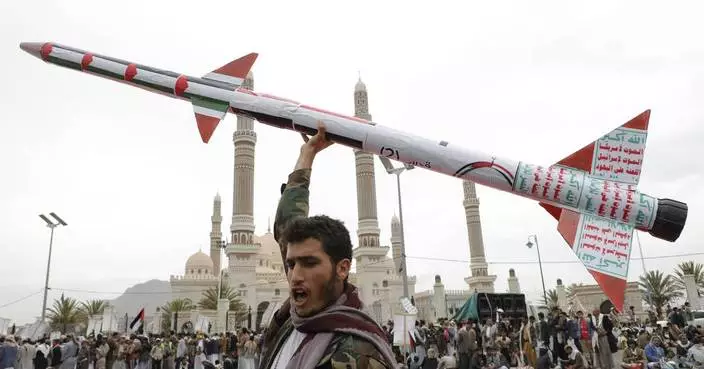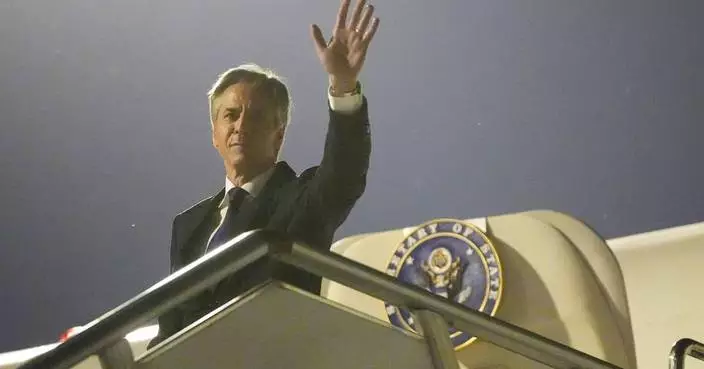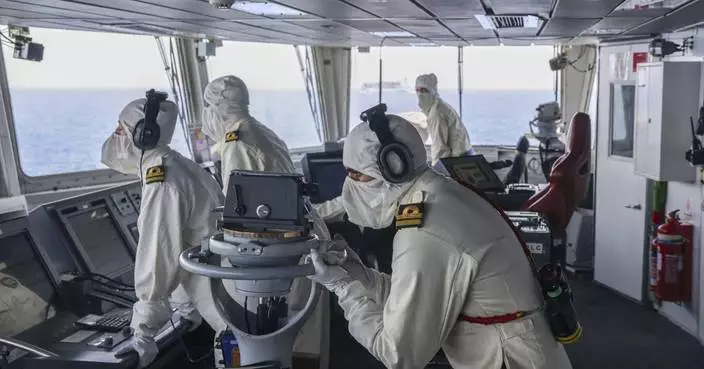Troops in a Saudi-led coalition captured a town south of Yemen's port city of Hodeida on Thursday as fierce fighting and airstrikes pounded the area, officials said, on the second day of an offensive to capture the strategic harbor.
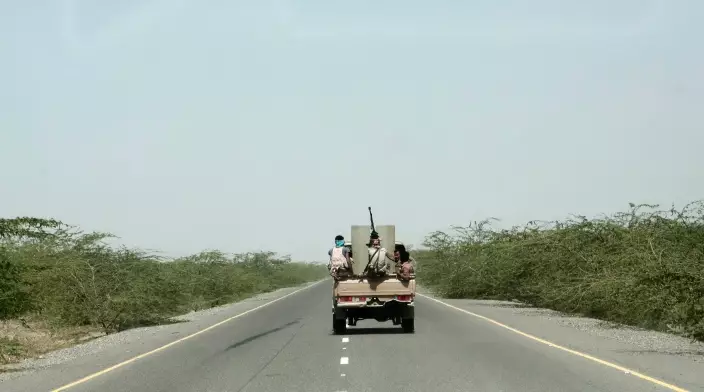
In this Feb. 12, 2018 photo, Saudi-led backed forces, part of Ahmed al-Kawkabani's, southern resistance unit in Hodeida, ride their vehicle in Hodeida, Yemen. (AP Photo/Nariman El-Mofty)
A Saudi military spokesman described forces drawing closer to Hodeida (hoh-DY'-duh) , through which some 70 percent of Yemen's food enters via the port, as well as the bulk of humanitarian aid and fuel supplies in this country on the brink of famine. Around two-thirds of the country's population of 27 million relies on aid and 8.4 million are already at risk of starving.
International aid agencies and the United Nations had warned Saudi and Emirati forces not to launch the assault against the Shiite rebels known as Houthis who hold the city, fearful it could shut down that vital route for aid. However, the UAE's ambassador to U.N. agencies in Geneva maintained that the coalition had no choice but to act.
"Should we leave the Houthis smuggling missiles?" Ambassador Obaid Salem al-Zaabi asked journalists. "This comes from this seaport. We already gave the United Nations the chance to operate from this seaport, and (the Houthis) refused."
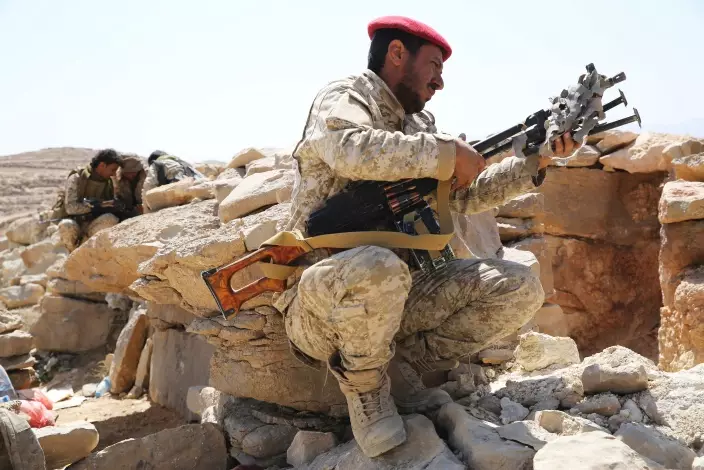
FILE - In this Friday, Feb. 2, 2018, file photo, a Yemeni soldier allied to the country's internationally recognized government unslings his machine gun on the outskirts of Sanaa, Yemen. (AP Photo/Jon Gambrell, File)
The ambassador's comments contradict a January U.N. panel of experts report calling it "unlikely" the Houthis used Hodeida for smuggling arms. The panel cited the fact that vessels coming into the port faced random inspection, required U.N. approval and no weapons had been seized on the route since March 2017.
However, the U.N. and Western nations say Iran has supplied the Houthis with weapons, from assault rifles to the ballistic missiles they have fired deep into Saudi Arabia, including at the capital, Riyadh. Over 150 ballistic missiles in all have been fired into the kingdom by the Houthis, according to Saudi officials.
The Norwegian Refugee Council said in a statement the port remained open Thursday, citing information from the U.N. There were "four vessels filled with food and fuel at berth" and another five vessels at anchorage, it said.
"People in the governorate have reported heavy airstrikes along coastal areas and roads in districts south of Hodeida city," the council said. "No direct attacks have been reported within Hodeida city itself, despite the overhead presence of fighter jets."
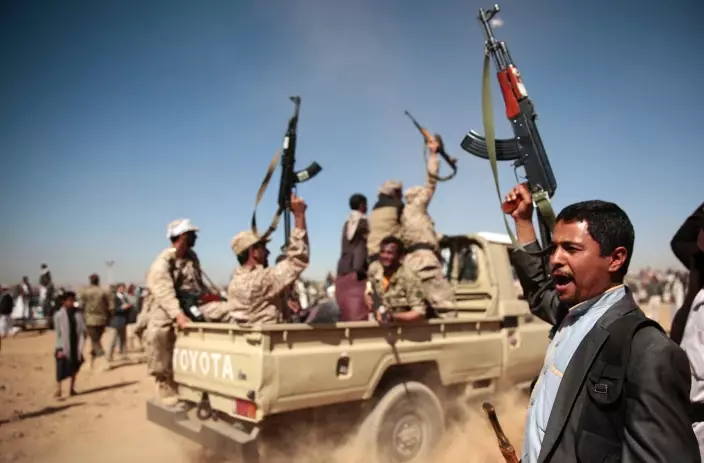
FILE - In this Jan. 3, 2017, file photo, a tribesman loyal to the Houthi rebels, right, chants slogans during a gathering aimed at mobilizing more fighters into battlefronts to fight pro-government forces in several Yemeni cities, in Sanaa, Yemen. (AP Photo/Hani Mohammed, File)
Meanwhile, soldiers took the town of Nakhila in Yemen's ad-Durayhimi district, some 20 kilometers (12.5 miles) south of Hodeida International Airport, according to Yemen's government-run SABA news agency.
Fighters continued to move closer to the airport in fighting Thursday. Col. Turki al-Malki, a Saudi military spokesman, described coalition forces as around 6 kilometers (3.7 miles) from the airfield in an interview with Saudi-owned satellite news channel Al Arabiya.
The Saudi-led coalition backing Yemen's exiled government launched the assault on Hodeida on Wednesday, raising warnings from aid agencies that Yemen's humanitarian disaster could deepen.
The attack is aimed at driving out Iranian-aligned Houthis, who have held Hodeida since 2015, and break the civil war's long stalemate. But it could set off a prolonged street-by-street battle that inflicts heavy casualties.
The fear is that a protracted fight could force a shutdown of Hodeida's port at a time when a halt in aid risks tipping millions into starvation.
The initial battle plan appeared to involve a pincer movement. Some 2,000 troops who crossed the Red Sea from an Emirati naval base in the African nation of Eritrea were awaiting orders to move in from the west after Yemeni government forces seize Hodeida's port, Yemeni security officials said.

In this Feb. 12, 2018 photo, a boat docks on the Red Sea port of Hodeida, Yemen. Yemeni pro-government forces are planning an all-out assault on the Red Sea port of Hodeida, a lifeline for aid to the war-ravaged country, a military commander said Wednesday, May 30, 2018. (AP Photo/Nariman El-Mofty)
Emirati forces with Yemeni government troops moved in from the south near Hodeida's airport, while others sought to cut off Houthi supply lines to the east, the officials said. They spoke on condition of anonymity as they weren't authorized to brief journalists.
Four Emirati soldiers were killed in Wednesday's assault, the United Arab Emirates' state-run news agency said, but gave no details of how they died. Al-Zaabi, the UAE ambassador in Geneva, said they died in the Hodeida campaign, without elaborating.
Hodeida is some 150 kilometers (90 miles) southwest of Sanaa, Yemen's capital, which has been in Houthi hands since September 2014. The Saudi-led coalition entered the war in March 2015.
The United Nations and other aid groups already had pulled their international staff from Hodeida ahead of the assault. The U.N. Security Council was scheduled to meet Thursday to discuss the offensive.
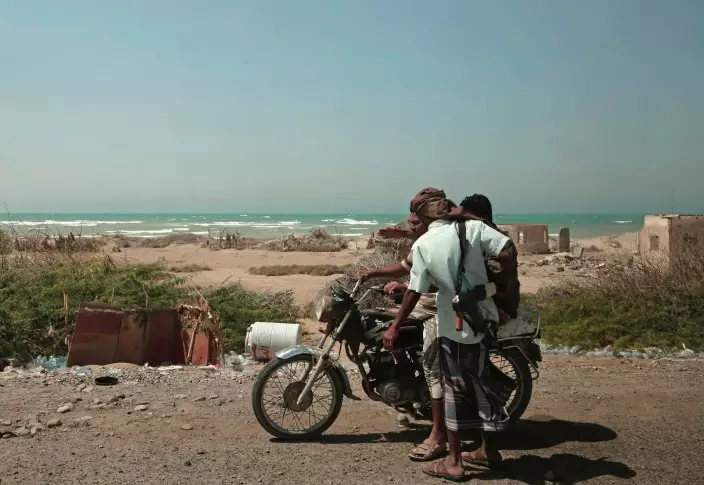
In this Feb. 12, 2018 photo, Saudi-led backed forces, part of Ahmed al-Kawkabani's, southern resistance unit in Hodeida, ride a motor bike in Hodeida, Yemen. (AP Photo/Nariman El-Mofty)
More than 10,000 people have been killed in Yemen's civil war, which has displaced 2 million others and helped spawn a cholera epidemic. Saudi-led airstrikes have killed large numbers of civilians and damaged vital infrastructure.
The coalition has blocked most ports, letting supplies into Hodeida in coordination with the U.N. The air campaign and fighting have disrupted other supply lines, causing an economic crisis that makes food too expensive for many to afford.




